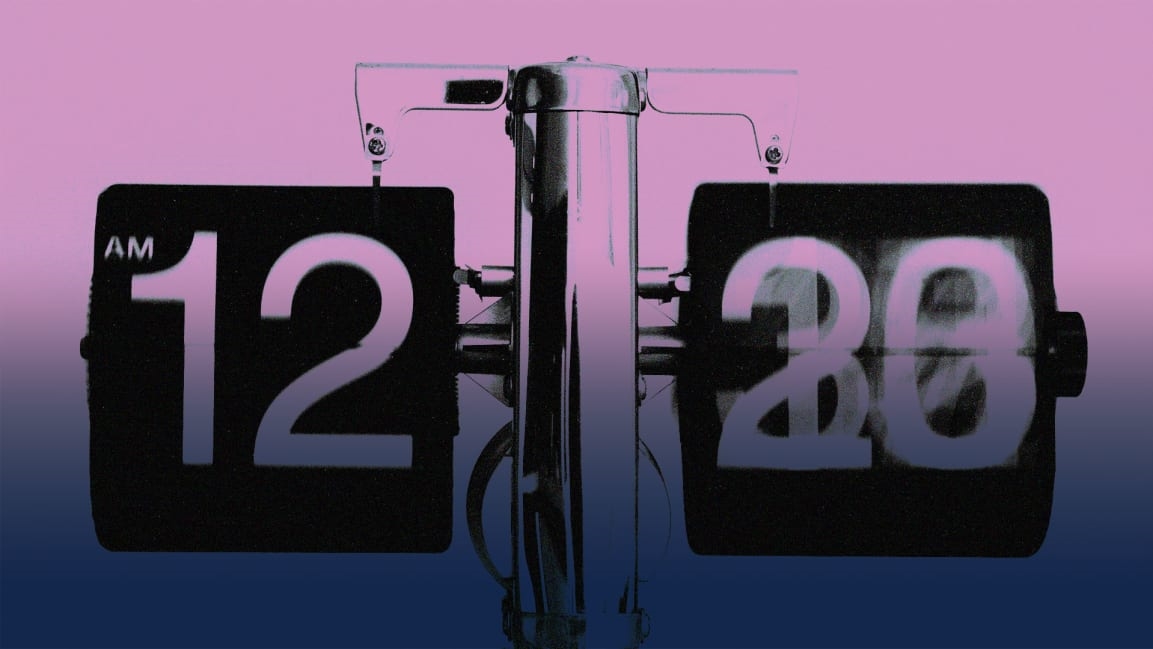It’s time to stop measuring productivity in hours
In a 1996 episode of NBC’s Seinfeld, George discovers that he’s accidentally fooled his bosses, Steinbrenner and Wilhelm, after locking his keys inside of his car outside his office.
“Steinbrenner is like the first guy in at the crack of dawn. He sees my car, he figures I’m the first guy in,” George tells Jerry. “Then, the last person to leave is Wilhelm. He sees my car, he figures I’m burning the midnight oil. Between the two of them, they think I’m working an 18-hour day!”
Since the period of industrial revolution, we’ve used one primary scale to measure productivity: hours. As Seinfeld demonstrates, however, it’s not always an effective way to gauge actual performance or output. Measuring productivity in hours alone can discourage workers from being more efficient with their time. In some instances it rewards those who are perceived to be working more hours, even when they’re not accomplishing much, as demonstrated by George.
Now that many workplaces have closed their doors and allowed employees to work from home, there is a unique opportunity to experiment with a different—and far more effective—scale.
How work became tethered to time and space
For nearly a century productivity has been closely tied to time and space, measured in terms of how many hours a worker spends at a designated workstation. It was a convenient measurement tool for a period defined by standardization, where the vast majority of jobs valued physical presence over cognitive output.
“It probably started with the industrial revolution, but it came to its fruition in the 1920s assembly line when Henry Ford set up a factory system where work is commoditized and the content is mainly physical,” explains Robert Pozen, a senior lecturer at MIT Sloan School of Management and senior fellow at the Brookings Institution.
While the system was designed to fit the working culture of the era in which it was created, however, Pozen believes it doesn’t translate well into the modern reality.
“Hours are a relic of the past that might be appropriate for assembly line work, but in a knowledge economy doesn’t make any sense,” he says. “The problem is that for most organizations, they’re not willing to just get off hours, because they don’t have a good replacement.”
In search of a viable alternative
In his 2012 book Extreme Productivity: Boost Your Results, Reduce Your Hours, Pozen offers an alternative productivity measurement system that he calls “performance objectives with success metrics.”
“People should spend real time figuring out what their goals, priorities, and objectives are, and agree on success metrics on how you can tell after a week or a month whether you have achieved those,” he says.
Pozen’s system empowers workers to work on their own schedules, so long as they’re able to complete the agreed upon tasks within the agreed upon timeframe. Though it may require extra effort on behalf of employers and managers, however, Pozen believes that the practice of defining goals helps organizations better focus their efforts and better utilize their human resources. “It’s more than just replacing hours; it helps develop consensus on what the organization is trying to achieve, and how they measure success,” he says.
Organizations going remote have a choice
Redefining how you measure productivity can be a daunting task, but maintaining the status quo is often more difficult in the face of today’s remote working reality.
“A lot of entrepreneurs are learning that you can’t have that stringent control that you used to have when you were all in one space, but that it really doesn’t matter if someone works nine to five or four to midnight, as long as they get the job done,” explains small business consultant Marla Tabaka.
Tabaka adds that there are remote jobs that require a strict adherence to hours, such as customer service. In other roles, however, employers have been given a choice; use somewhat invasive tools to remotely track employee screens and maintain strict working hours, or offer employees greater flexibility and control over their own schedules.
While the former might provide employers with greater oversight, Tabaka argues that the latter breeds a stronger work culture and in turn more productive employees. “I’m seeing more CEOs begin to learn that letting go of that control gives them more control,” she says.
A culture of trust
Moving from a workplace that emphasizes hours to one that emphasizes output is no small feat, and requires employers and managers to have a number of systems already in place. Chief among them, according to Tabaka, is a culture of trust.
“Having a culture of trust breeds accountability,” she says. “When it’s just about numbers people begin to feel like just another number; when its tied to that broader company vision and goals, people feel like they’re part of something bigger, and they’ll work harder for you, because it becomes a part of their life.”
Tabaka adds that an engaged employee “can do more in six hours than an employee who is stressed can do in 12.”
Another important prerequisite is for managers to unlearn much of how they’ve traditionally approached their oversight role and evaluated employee productivity.
“There has to be some level of manager training that helps managers refocus on productivity and goals and results and processes, and really get down into the details of, what does productivity ultimately look like? How do you know, outside of hours worked, when someone is productive on your team? What are the main goals on your team? What does each individual have to do to reach those goals?” says Brie Reynolds, the senior career specialist for FlexJobs.
The future of work?
Reynolds believes the system of monitoring and compensating staff based primarily upon hours worked has long been ripe for disruption, and while the coronavirus pandemic provides a unique opportunity to consider alternatives, she doesn’t expect companies to stop counting hours anytime soon. “I think there will always be some sort of time element to it, but i don’t think it will continue to be this eight hours a day standard,” she says.
One of the biggest roadblocks to adopting a new scale for measuring productivity, even during this seemingly ideal opportunity, may be tied to basic human psychology.
“I think we will make progress toward people being judged more on their productivity than hours present the more people are working remotely, but I don’t think it will replace it, because it’s just counter-human,” says Johnny C. Taylor Jr., CEO of the Society for Human Resource Management.
Taylor explains that if an employer asks a staff member to complete a task, they likely prefer that they do so in 10 minutes, rather than an hour. On the other hand, if one of his colleagues worked for 10 minutes and took the rest of the hour off while he continued to work, Taylor says he wouldn’t be comfortable with that.
“Even if they get all their work done, fundamentally that does not feel fair,” he says. “As much as we know this is theoretically the right thing to do—I absolutely agree it should be productivity-based—there’s that human part of us that says it doesn’t fundamentally feel fair.”
Taylor adds that the already delicate issues of gender, race, identity, and privilege in the workplace would only further complicate our sense of fundamental fairness.
“Then you get into this conversation of, ‘well he’s a faster typer, because he lived in this neighborhood and they had better typewriters than I did growing up,’” he says.
In a remote setting, however, making those side-by-side comparisons becomes more difficult. While Taylor encourages organizations to continue seeking better solutions, however, he doesn’t see the traditional system of measuring productivity in hours going away anytime soon.
“Do I think it will change significantly? No, because of this fundamental concept of human fairness,” he says. “But should it? Yes, and I’m hoping the move to more remote work—which I think will persist beyond the COVID-19 crisis—will move us further in that direction.”
(8)



